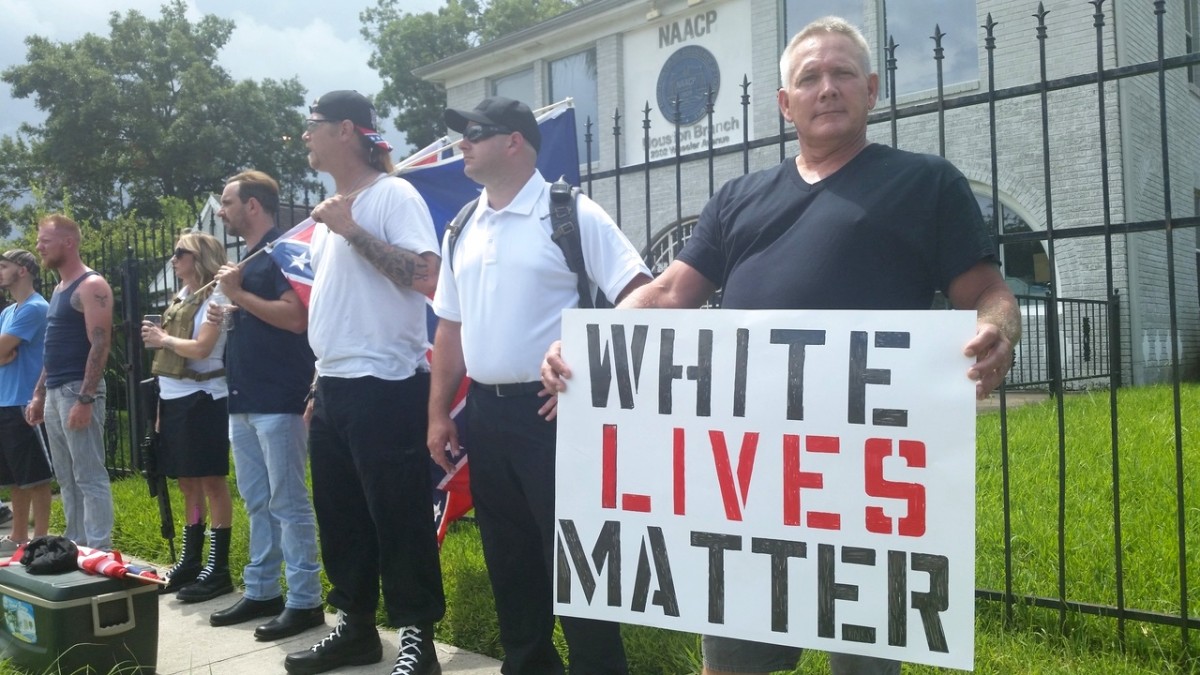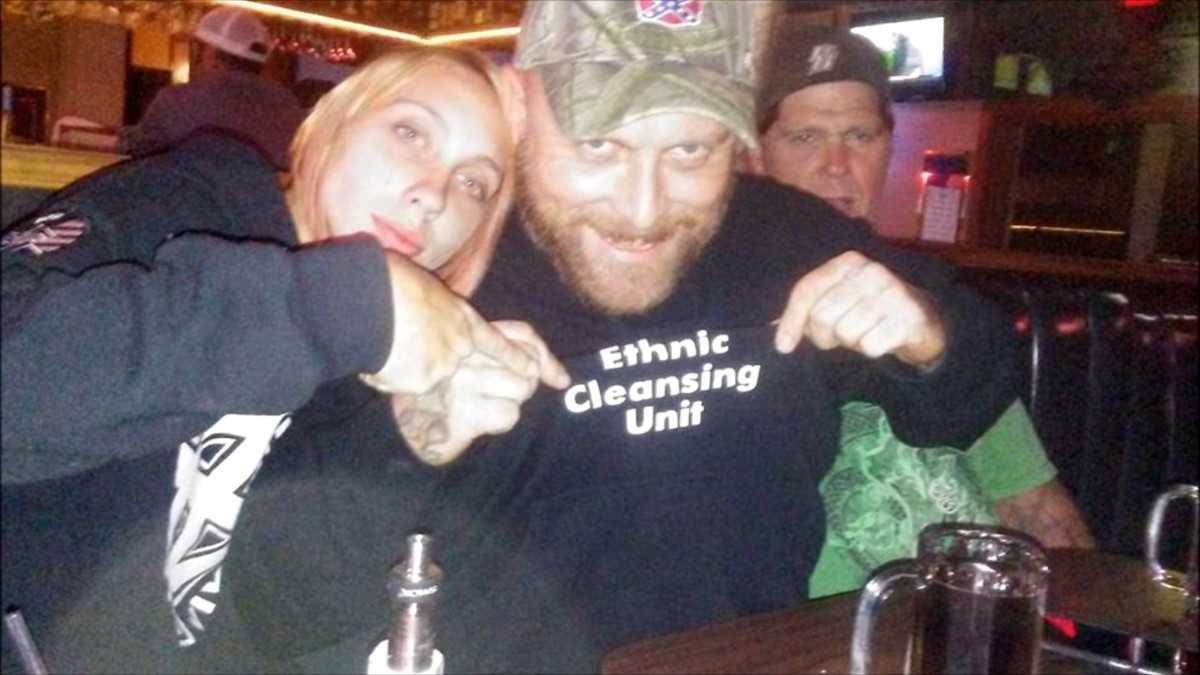
A few weekends ago in several cities around Tennessee, large scale “White Lives Matter” marches failed to draw the crowds expected by nervous citizens in the area. As with many of the recent white-centric demonstrations, counter-protestors outnumbered the marchers several times over. Police kept the two factions separated and the event passed widely without incident. Since the Charlottesville violence in August, this is the most recent in a line of fizzled attempts at white solidarity in the South.
All of which begs the question of when, and if, those marching to celebrate their perceived ethnic superiority will grow sufficiently scorned by society that they exit the streets and return their Swastika flags to the closet. Unfortunately, this moment seems increasingly distant for several reasons, pertaining mostly to the nature of the anti-fascist, counter-protest movement.
Demography
First, a large contingent of the counter-protestors comes from the same demographics that white supremacist groups traditionally target. This tends to strengthen the ridiculous assumptions within the white supremacist camp that there is a race war brewing – and that routine calls to arms, and shows of force, are important to protect the white race.
This is not to suggest that anti-racism protests, like the kind that happened in some cities last weekend, are not – or have not already been – helpful or constructive in battling back against white supremacist hatred. If no one stood up to the growing racist movements gaining oxygen around the U.S., the situation could be far worse. Counter-protests prove that citizens are no longer willing to tolerate certain speech and actions, particularly those relating to ethnic or racial superiority. This is, in the minds of many if not most, a noble cause.
White Fear
However, the fact is that many white people are feeling increasingly threatened by current trends in the political and social economy. While most people stay home and try to live their lives without incident, a determined few continue to show up to marches and rallies celebrating the age-old phenomena of racial hatred, bigotry, scapegoatism and mistrust. And when they are faced with a wall of counter-protesters, one has to assume they derive a sort of legitimacy from their actions.
Again, the reason these marches have shrunk so substantially has much to do with the social pressure being put on potential marchers by counter-protest and anti-fascism movements. Preventing the larger white power movements may have the side effect of a smaller, more entrenched faction.
Misconceptions
It is also a flawed and dangerous assumption that society has suddenly turned a corner and now condones public displays of white supremacy. The Nazis and KKK have always held marches, though they were mostly small and contemptible events that held little public interest prior to Donald Trump's election. The fact is that most Americans, Trump supporters included, want absolutely nothing to do with these marches or the hateful movements they support.
Moving Forward
The single best means for preventing the protests, then, may be through inclusion. The majority of white supremacists marching at public rallies come from a lower socioeconomic background – the same demographic responsible for electing Trump. It is not clear yet whether there is a possibility of bridging the racial and socioeconomic gap between the protestors and counter-protestors, but a few changes could go a long way.
1. No More Violence
The physical intimidation has gotten out of hand. We've all probably envisioned the righteous “punch a Nazi” fantasy, but now the world is really giving us an opportunity to live it out in our own backyard. We need to remember the sacrifice for such actions isn't worth the satisfaction of beating up a white supremacist. The moment blows are exchanged is the moment white power marchers justify why they put on robes and hoods that morning.
Further, we live in a unique democracy that puts free speech above all. This has routinely encouraged socially divergent groups to take action and use their legal mouthpiece in the public domain. Physically silencing these voices in the name of anti-fascism is as dangerous as it is ironic. Beating up a Nazi will not teach him or her to stop being a Nazi, but will enforce the internal narrative that they are a marginalized group under attack.
2. Outreach
On the other hand, attempting to reach out to include lower-middle class white people in protests against Nazis is easily among the most effective tools moving forward. Most people in the white, working class demographic want nothing to do with white supremacists, but they also may not feel welcome or comfortable among strident anti-fascists. The movement needs to find a way to bring those voices in.
By getting white people involved in protesting the unacceptable rise of white hatred, bigotry and racism, counter-protestors can shatter the illusion of so-called white solidarity. An effective resistance needs diversity of races, classes and ethnicities to show that this is a cause that everyone can and should get behind. And that diversity includes, of course, white people themselves.
Silence on the part of white folks is troubling in the face of a movement that claims to speak for the "white race." Sitting at home while mobs attack one another may be the safer option, especially when the event is framed by media or politicians as open racial conflict. But it is not the way to mend the divisions in America. We need everybody to take a stand against this savagery.
3. Coverage
Of course, many white people have already been part of and in many cases led the anti-fascism and counter-protest movements, which brings up the final necessary change. Media coverage has been doing a terrible job of painting these developments as a brewing race war. The movement needs to knowingly divorce itself from this narrative, and the media outlets must understand that this is a movement of Americans speaking out against unacceptable hatred and racism.
The Rough Road Ahead
We are living in troubled times, to say the least. Frustration and intolerance is not only in the air, but tensions between white supremacist and anti-fascist movements have routinely come to blows – and in the most tragic case, to the death of the anti-fascist protester Heather Heyer in Charlottesville.
Channeling the actions of past heroic leaders like Gandhi and Martin Luther King, Jr., the way forward today is best paved through inclusion and nonviolence. It may be a tough pill to swallow in the face of great evil. But violence and repression of free speech won't equate to an effective resistance. It will only dig us deeper into the hole we're already in.
3 WAYS TO SHOW YOUR SUPPORT
- Log in to post comments
















